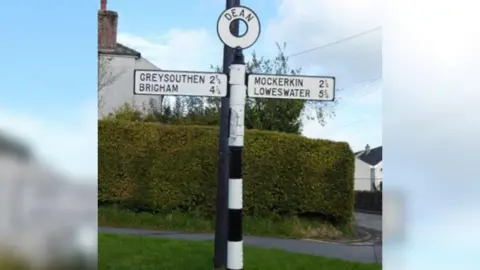More than 50 Victorian era fingerposts restored
 Cumberland Council
Cumberland CouncilMore than 50 navigational fingerposts from the early 20th Century have been restored.
Cumberland Council said the cast iron posts, which are recognised by their distinctive black and white bands, were repainted, washed and repaired in 21 parishes.
Some of the oldest ones in the UK are thought to have been installed in the late 19th Century, with many having been removed during World War Two to confuse any invading army.
The council said the road signs were "adored by residents and visitors" and by restoring them it had "honoured the past".
According to Dorset Campaign to Protect Rural England (CPRE), the fingerposts began to appear following the 1773 General Turnpike Act, which compelled "trustees" to install signs with distances for travellers.
However, it said many which had not been deliberately removed during the war had fallen into disrepair.
It added that of the 1,300 fingerposts thought to exist in the 1950s, 717 had survived.
Cumberland Council said some dated back to the early 20th Century having "stood the test of time" and surviving World War Two thanks to their preservation rather than being melted down.
"This makes them not just directional aids but valuable pieces of our heritage that contribute significantly to Cumberland's local character," the council said.
The posts were either washed, repainted or had parts welded, recast or replaced.
Councillor Denise Rollo said: "These fingerpost signs are an iconic part of our rural landscape and local heritage.
"Restoring them is a way of honouring our past, supporting the character and identity of our communities while looking to the future."
